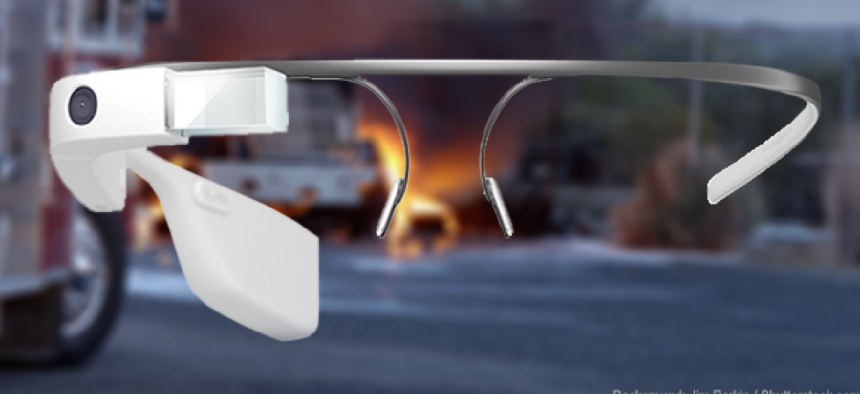App aims to turn Google Glass into a situational awareness tool


Connecting state and local government leaders
BAE Systems' GXP Xplorer Snap mobile app is being designed to speed delivery of intelligence and other situational data to first responders.
A new geospatial data collection and photo reporting app from security services firm BAE Systems will be available later this year for Google Glass, the company reported.
The GXP Xplorer Snap mobile app is being designed to speed the delivery of intelligence and other situational data to a variety of first responders, according to BAE.
Google Glass users equipped with the GXP Xplorer Snap will be able to take photos and record a title and brief voice description of the shot, all without using their hands.
The report is then automatically geotagged, time-stamped and uploaded to a GXP Xplorer server, where it can be immediately shared and made accessible to the rest of the first responder group.
“This simple, wearable technology will revolutionize situational awareness and incident response capabilities for police, fire and other first responders,” said DeEtte Gray, president of BAE Systems’ Intelligence & Security sector.
“The technology benefits pilots by delivering imagery and mission critical data directly through the hands-free device,” Gray said.
A similar version of the GXP Xplorer Snap mobile app is available for iOS and Android devices.
Google Glass, Google’s Internet-connected eyewear, went on sale to the public for one day only -- April 15. Early adopters of the high-tech eyewear will serve as testers of the prototype; Google Glass will be available for the broader public later this year.
GXP Xplorer Snap works as a companion app to the GXP Xplorer for managing and accessing images, terrain, features, maps, charts, videos, report, as well as Microsoft Office files and other data. GXP Xplorer is part of BAE’s GXP Enterprise Solution suite, developed to streamlines image analysis. Photo reports that are collected with the app can be brought into GXP WebView, which gives users access to geospatial data via the Web.
Only users of BAE’s GXP Xplorer will be able to use the Snap app, the Wall Street Journal reported. An upgrade is planned next year that would allow intelligence analysts to send information back to the Google Glass wearer, WSJ added.
BAE Systems is also considering applying the technology to other military devices.
The solution appears to be similar to Q-Warrior, a helmet mounted display system designed by BAE Systems, which also aims to provide soldiers with better situational awareness in field. Q-Warrior is currently being tested with U.S. military researchers.
Q-Warrior attaches to in-service helmets and is powered by a vest. It provides textual information, warnings and threats, the display of waypoints and routing information, enhanced night vision, thermal imaging display and a seamless day/night transition, according to Paul Wright of BAE System’s Electronic System.

NEXT STORY: Satellite imagery provider gets nod to sell higher res images




